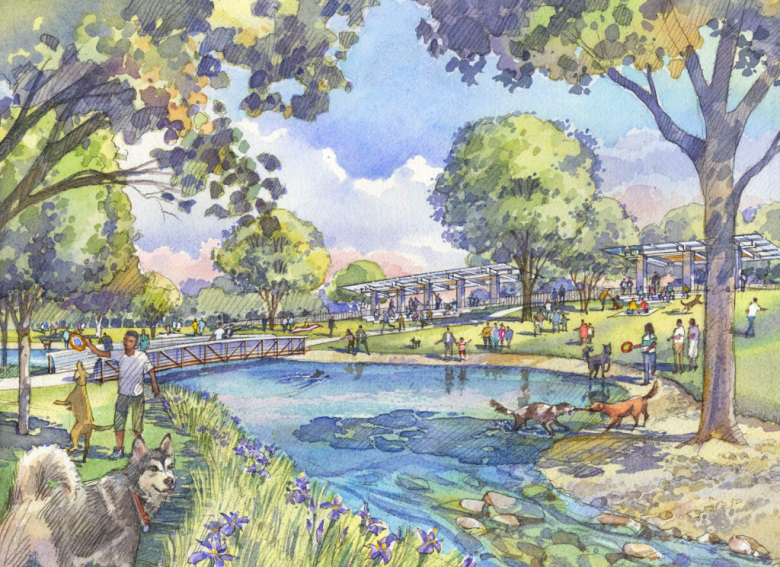
A concept for Buffalo Bayou Park’s official dog space on which construction began earlier this year. Photo credit: Buffalo Bayou Partnership
In early March, U.S. Environmental Protection Agency (EPA) Administrator Gina McCarthy toured Houston’s $58 million Buffalo Bayou Project, a restoration and conservation project on which construction started in 2012. The tour also focused on the city’s Bayou Greenways 2020 program.
The Buffalo Bayou Project includes restoration of natural landscapes as well as new and upgraded trails and pedestrian bridges. With $5 million, the Harris County Flood Control District is restoring the bayou’s channel conveyance capacity and banks. The district is removing silt and regrading the bayou’s slopes to reduce erosion. Creating wetland gardens and reintroducing native plants also will help control erosion.
In light of climate change, Houston is working to mitigate the impacts of flooding and protect water quality from stormwater pollutants. The Buffalo Bayou and Bayou Greenways projects are helping the city build resilience and expand recreational opportunities by using green infrastructure in public parks. Bayou Greenways is an approximately $480 million project that will add 1620 ha (4000 ac) of new green space in Houston. The greenways also will support 480 km (300 mi) of continuous hike and bike trails.
Houston Mayor Annise Parker serves on the President’s State, Local, and Tribal Leaders Task Force on Climate Preparedness and Resilience, which is working on actions to increase resiliency in cities.
“Houston’s best defense against extreme climate events and natural disasters is grounded in its local efforts to leverage its natural resources — its bayous, marshes and wetlands,” said Parker. “Only through a strong vibrant natural landscape can we combat natural disasters like major hurricanes, annual flooding, and water pollution.”




